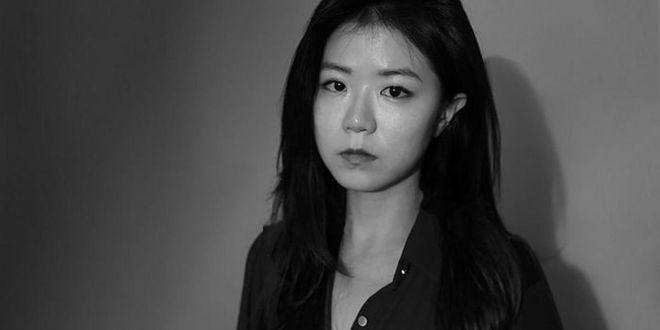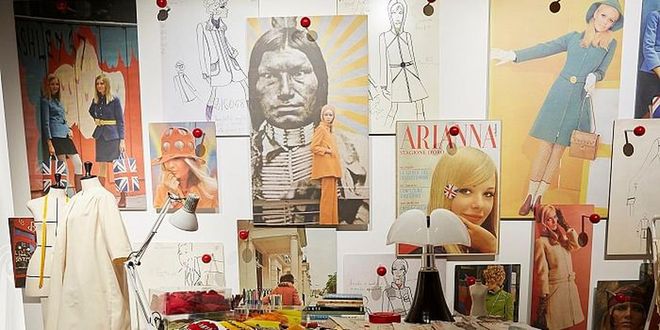Take A Peek Inside Max Mara COATS! Exhibition In Seoul With Yiyun Kang
The celebrated Korean artist takes us through the highlights of Max Mara's 60 years of archive in Seoul


Photo: Courtesy of Max Mara
Yi Yun Kang Max Mara COATS Exhibition Seoul
Max Mara, the Italian fashion House, worked with Yi Yun Kang for their COATS! Exhibition in Seoul. The celebrated conceptual artist delved on the making of objects focusing on Max Mara’s archival coats in site-specific installations. Here’s the excerpt from a recent interview with Kang:
When was your first meeting with the Max Mara Company and how did you react?
My first visit to Reggio Emilia was in May, 2017. Before the visit to the Max Mara HQ Factory Archive, and Maramotti Collezione, my understanding of the operations of the company was superficial. The visit helped me to not only understand but also genuinely ‘feel’ the philosophy ofthe company. At the heart of its philosophy, there are people who really appreciate it and try hard to adhere to its values. I found it to be a particularly inspirational experience.
Related article: Milan Fashion Week: 10 Best Looks From Max Mara Spring 2018
Did you know about Max Mara previously?
Yes, of course.
How did you feel during the visit to the Max Mara archives in Reggio Emilia?
I truly admire Max Mara’s respect for their heritage and values and the effort that has been put in to support them. While I was working at the Victoria and Albert Museum (V&A) as a resident artist, something I will never forget was my visit to their archive and storage facilities. I realized that the overall quality of the museum is reflected by the perfect maintenance of its archive collections and a profound respect of its history.I felt the same way when I visited Reggio Emilia.I was deeply impressed by the focus on its essence, and I believe that it is rooted in the company’s archive.
What do you think about fashion?
By definition, fashion is a trend. It is a style in dress, ornament, or manners of behavior.To me, fashion is not just a fast-changing trend, but a means of expressing one’s character and feelings that can also reflect the specificities of an occasion. I also believe that the choice of fashion relates to a fundamental understanding of my own physical body.
Related article: Get To Know Actress Zoey Deutch, Max Mara's Face Of The Future

Photo: Courtesy of Max Mara
It is clear that art influences fashion. Do you think that fashion influences art too?
As I have just pointed out, fashion is a trend; it is a movement, a tendency, and an inclination that is closely related to desire. I consider such trends that originate from desire to be also very important in art. Nowadays, I feel that fashion is not only about garments but also about creativity and lifestyle as a whole. For example, Max Mara manifests its identity not only through their fashion items, but also through their archive, Maramotti Collezione, and the Max Mara Art Prize for Women. In this way, fashion and art can cohabit by sharing influences and supporting each other.
Where do you think that fashion and art meet?
I certainly believe that they coincide in this exhibition! To continue from the previous question, I feel that this exhibition is one kind of Max Mara’s holistic manifestations. It is not only about the history of Max Mara’s clothes but also about its heritage and a deep respect for art. I believe that this exhibition will generate a dynamic experience that can connect the company with its audience through the contemporary artwork.
Related articles: Irene Kim, Kristina Bazan & More Are Heading To Shanghai For Max Mara’s Pre-Fall 2017 Show
How do you think it is possible to combine your language with the language of fashion?
First of all, I don’t think that I completely comprehend the language of fashion. However, it seems to me that, at least in the case of Max Mara, the fundamental language of my work and that of fashion have a great deal in common. In Max Mara’s consistent philosophy and respect for its heritage, I find a craftsmanship that is not volatile. Moreover, Max Mara’s minimal and modernistic aesthetic style coincides with my own visual language. I appreciate that my work and Max Mara’s designs avoid superfluousness and redundancy; both are faithful to the essence, in such a way that people often feel that they are more poetic than decorative.

Photo: Courtesy of Max Mara
What is the difference between an art production and a fashion one?
Both are actually quite similar. To produce works of art and fashion requires effort, perfection,and collaboration on many levels. However, as art is not always produced with a sale in mind,the art-making is sometimes very spontaneous and intuitive. I suppose that the objective of making a sale draws an essential distinction between art and fashion. I think that art has relatively more freedom than fashion in terms of developing its concepts, visualization, and approaching its audience.
What are the starting points and inspiration behind your artworks?
Surface and depth are vitally important, as is desire. Fabric wraps and constructs the volume of the human body. When aesthetics intervenes, it becomes a fashion. Fashion is closely related to desire. Max Mara’s fashion is not superficial but deep. Dome is not just a surface, it is simultaneously an environment. This is a deep, volumetric dimension. These are my starting points and they form the key concepts of this work.
What relationship is there between your art and Korean culture? Has Korean culture influenced your artwork?
I don’t think that Korean heritage has significantly influenced my work on a surface level. Rather,the influences of Korean culture exist on a subconscious level. My installations are mostly site specific,so I’m quite adaptable to given conditions and flexible when it comes to mixing my language into the existing structure in order to create a new experience.Similarly, contemporary Korean culture also has a high degree of adaptability and remixability. For example, let’s take a look at the Dongdaemun Design Plaza (DDP) which is the venue of the COATS! exhibition. Within 5 minutes of the site, you can see Dongdaemoon (a.k.a Heunginjimun),a prominent Korean historical landmark built in the 14th century, Dongdaemoon market, a large commercial district comprising of traditional markets and shopping centers, and the DDP itself, a futuristic complex designed by Zaha Hadid. As such, all of these conflicting values have somehow harmoniously converged into contemporary Korean culture. We’re good at blending diverse qualities in order to create a new environment, and I think this distinctive feature of Korean culture intuitively affects my work.
Space is very important for your work. How has the element of the dome conditioned your project?
The dome has been a very challenging canvas for me. Moreover, the dome at the COATS! exhibition is 20 meters in diameter. It is not an object, but rather an environment that is completely immersive, absorptive even. Our perception of and engagement in this environment is considerably different to that of other types of screens. Therefore, I firstly needed to investigate how the dome structure is conceptually and practically different so I could produce a video that is interconnected with the dome structure. In this way, the narrative of my projection could be developed with careful consideration of its environment; it is an immersive dome.
Watch the video from the exhibition: